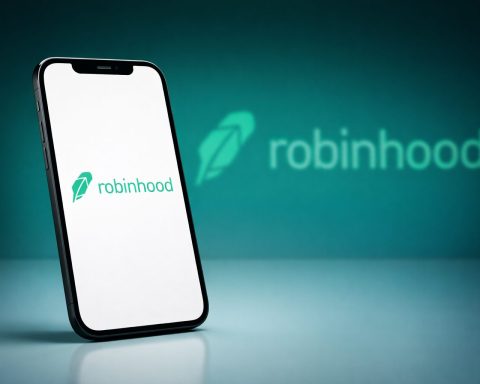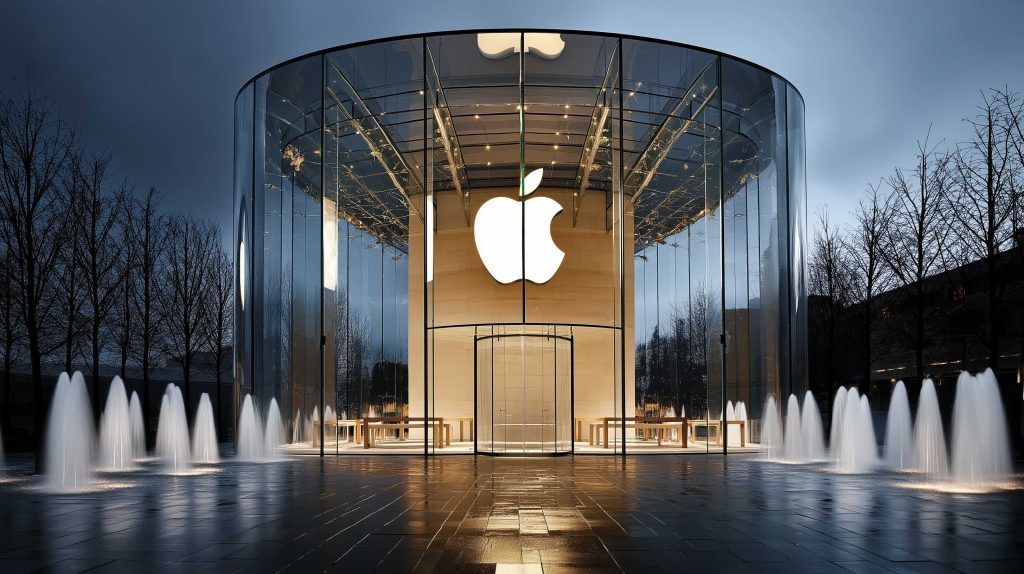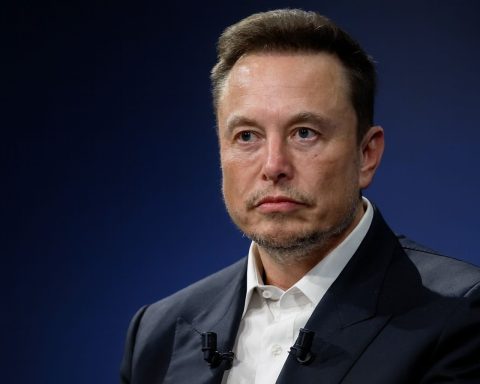- OpenAI released GPT-5 on August 7, 2025, with a 256,000-token context window and added GPT-5-mini and GPT-5-nano variants.
- OpenAI published open-weight models GPT-OSS 120B and GPT-OSS 20B under the Apache 2.0 license on August 5, 2025, to run and fine-tune locally and counter China’s open-source progress.
- Anthropic expanded its Claude model to a 1,000,000-token context window, enabling analysis of entire codebases (over 75,000 lines of code per prompt).
- SpaceX achieved its 100th launch of 2025 on August 18, sending 24 Starlink satellites to orbit with a Falcon 9 booster on its ninth flight; the company plans up to 95 annual launches from Vandenberg.
- NASA’s Artemis III program began major assembly with the Space Launch System core-stage engine section moved into the Vehicle Assembly Building in August, aiming for a 2027 lunar south-pole landing and a 2025 end to naming astronaut candidates.
- The NASA-ISRO NISAR mission deployed its 12-meter radar antenna on August 15, the largest reflector ever flown on a NASA satellite, a $1.3 billion mission with full science operations starting in October.
- August saw TikTok face a September 17 deadline to be sold to a U.S. entity or face a ban, with bids around $40–$50 billion and major bidders like Oracle and Walmart reportedly pulling out.
- Instagram rolled out Reposts, a Friends Map, and a Friends tab in Reels during August to boost sharing within users’ social circles.
- The UK saw Vodafone UK and Three UK complete their £15 billion merger, creating the largest mobile carrier in Britain with about 27 million customers and planned £11 billion of upgrades including 5G Standalone coverage by 2034.
- In policy and geopolitics, the U.S. floated equity stakes in chipmakers receiving CHIPS Act subsidies, and Nvidia agreed to sell its H20 AI chips to China only if the government secures 15% of the revenue from those sales.
August 2025 has been packed with major technology developments – from stunning advances in artificial intelligence and big moves in consumer gadgets, to headline-grabbing cybersecurity breaches and record-breaking feats in space. This comprehensive roundup covers all the key news across AI, consumer electronics, cybersecurity, enterprise tech, software, hardware, space exploration, social media, electric vehicles, and telecommunications. Read on for the biggest stories of the month, expert insights, and links to official sources for more detail.
Artificial Intelligence – GPT-5, Open-Source AI, and Global Competition
OpenAI Launches GPT-5: The month opened with a bang as OpenAI released GPT-5, a much-anticipated leap in AI capability. OpenAI CEO Sam Altman hailed GPT-5 as “a significant step along the path to AGI”, noting that interacting with it “really feels like talking to an expert in any topic, like a PhD level expert” [1] [2]. GPT-5 rolled out to all ChatGPT users on August 7, bringing faster responses, higher factual accuracy, and a huge 256,000-token context window for understanding longer conversations [3]. OpenAI also introduced scaled-down variants (GPT-5-mini and GPT-5-nano) and new subscription perks for power users [4] [5]. On the business side, OpenAI’s valuation is soaring – the company began talks for a secondary share sale that could value it at about $500 billion, a massive jump from ~$300B earlier this year [6]. Current and former staff aim to sell up to $6 billion in stock (with SoftBank and others interested), reflecting OpenAI’s rapid revenue growth – an annualized run-rate of $12 billion as of mid-year (double the prior seven months) – and ChatGPT’s user base surging to 700 million weekly actives [7] [8].
Open-Weight Models and Global AI Race: In a strategic pivot, OpenAI also released open-weight AI models for the first time since 2019. Two new models (GPT-OSS 120B and 20B) were published with open weights on August 5, allowing developers to run and fine-tune them locally [9]. Sam Altman admitted one big motive was to counter China’s rapid progress in open-source AI. “It was clear that if we didn’t do it, the world was gonna be mostly built on Chinese open source models,” Altman said [10]. Chinese startup DeepSeek had stunned experts earlier in the year with its R1 model (open-source and surprisingly powerful), which U.S. policymakers took as a “wake-up call” [11] [12]. By open-sourcing its own models, OpenAI aims to keep AI innovation based on “a stack created in the United States, based on democratic values, available for free to all,” Altman wrote on X [13]. The open models, released under Apache 2.0 license, are already being touted as “the best and most usable open model in the world” by Altman [14].
Anthropic’s 1-Million-Token Context & Other AI Advances: Rival AI lab Anthropic made waves by expanding the context window of its Claude model to a whopping 1 million tokens – a 5× increase that lets AI digest entire codebases or even novels in one go [15]. This means Claude can handle over 75,000 lines of code in a single prompt, enabling new possibilities for analyzing large projects or documents. Meanwhile, Google DeepMind and others also pushed forward: Google is reportedly testing “world simulator” AI environments and rolling more generative AI into consumer products (as seen in their hardware event later this month). Nvidia, the industry’s workhorse, announced new AI robotics libraries and model frameworks at SIGGRAPH to bolster simulation and automation [16]. And in policy news, AI’s impact drew government attention – a Reuters/Ipsos poll found a majority of Americans fear AI could permanently displace many jobs [17] (adding pressure on lawmakers to craft AI regulations), while the White House continued discussing AI safety commitments with leading AI firms (building on earlier voluntary pledges).
AI Startups and Investments: Investor enthusiasm for AI remained red-hot. Robotics startup FieldAI raised a hefty $314 million Series B round in August, quadrupling its valuation to $2 billion [18]. FieldAI focuses on software that lets affordable robots handle “dirty, dull, dangerous” industrial tasks, and counts big names like Khosla Ventures, Intel Capital, Bezos Expeditions and Nvidia’s NVentures among its backers [19] [20]. “In robotics, there are consequences to actions, so managing that risk is the fundamental gap today,” said CEO Ali Agha, explaining that FieldAI’s platform uses physics-based AI to help robots operate safely in changing real-world environments [21] [22]. Likewise, Anthropic secured additional funding as it rolled out Claude improvements, and new AI-focused funds are launching to fuel the next generation of startups. All told, August 2025 underscored that the AI arms race – whether in model capabilities or open-source control – is only accelerating.
Consumer Electronics – Pixel 10 Goes Big on AI; Amazon Rethinks Tablets
Google Unveils Pixel 10 Lineup: Google’s annual “Made by Google” hardware event returned on August 20 with the debut of the Pixel 10 smartphones and a refresh of its gadget family. This year’s upgrades were modest but AI-rich. The Pixel 10, alongside a souped-up Pixel 10 Pro and larger Pixel 10 Pro XL, all feature deeper AI integration [23] [24]. New on-device AI tricks include a “Photo Coach” in the camera to help users frame better shots, and a proactive Assistant that can surface relevant info unprompted – for example, automatically showing your flight confirmation email if you’re calling an airline [25]. Google kept hardware changes relatively minor (industry analysts noted last year’s Pixel event was “bigger and bolder” in upgrades [26]), focusing instead on software smarts and tight integration with its AI services. Notably, prices remain flat for the Pixel 10 series despite inflation and tariff uncertainties [27]. Google is clearly aiming to broaden appeal – even introducing a Pixel 10 Pro Fold (foldable model) due in October [28] – without pricing itself out of the market. The company candidly acknowledged that its aggressive AI push in phones has not yet translated to major market share gains [29]. By keeping prices steady and adding unique AI features, Google hopes to draw consumers away from Samsung and Apple in the competitive premium phone space.
Amazon Revamps Fire Tablets with Android: In an interesting strategic shift, Amazon is preparing to ditch its custom Fire OS in favor of standard Android for the next generation of Fire tablets. According to insiders, a project codenamed “Kittyhawk” will see Amazon launch its first Android-powered Fire tablet in 2024 [30]. This move comes after years of complaints from users and developers about Fire OS’s limited app ecosystem. Since 2011, Fire tablets have run a heavily forked Android variant that locked users into Amazon’s app store, requiring app makers to create separate versions for Fire devices [31] [32]. The result: many apps never made it to Fire OS, and consumers soured on the clunky software experience. By embracing full Android (with Google Play services), Amazon aims to “address complaints about Fire OS” and make its low-cost tablets far more useful [33]. The upcoming high-end Fire tablet (expected around a $400 price point, nearly double the current top model) would be Amazon’s first to ship with Google’s Android instead of Amazon’s fork [34]. It’s a philosophical about-face for Amazon, which long insisted on its own ecosystem. But the company sees this as necessary to reignite tablet sales: better app selection and a familiar interface could transform Fire tablets from content-consumption gadgets into more versatile Android devices. For consumers, this means future Fire tablets might run YouTube, Gmail, Chrome and millions of other apps natively – a welcome change for many in Amazon’s user base.
Other Gadget News: Outside of Google and Amazon, most big consumer tech brands saved their splashiest launches for later in the year. However, some notable tidbits emerged in August: Apple didn’t have any major product releases (holding fire until the customary September iPhone event), but it did announce a new $600 billion commitment to U.S. investments including an “American Manufacturing” program on Aug 6 [35] – signaling plans to locally produce more components (possibly for its Vision Pro headset supply chain). Samsung rolled out its Galaxy Z Fold 7 and Z Flip 7 foldable phones in late July, which hit stores in August; reviewers praised their thinner, lighter design and improved durability as foldables inch toward mainstream [36]. And in the PC realm, Microsoft hinted at an upcoming Windows 12 preview with deeper AI integration in the Start menu and Office – though a formal announcement is expected at its fall Surface event. All told, August’s consumer tech theme was iterative improvements: refining products and baking in AI, rather than any radical hardware overhauls.
Cybersecurity – High-Profile Breaches and New Threats Emerge
Enterprise Data Breaches via CRM Hacks: A string of cyberattacks hit major companies through their third-party customer databases, highlighting supply-chain vulnerabilities. Workday, a leading HR and finance cloud provider, disclosed that hackers stole contact data (names, emails, phone numbers) from one of its CRM systems [37] [38]. The breach, discovered August 6 and revealed by Workday on Aug 15, did not compromise core customer HR data, but the pilfered info could fuel follow-on scams. Workday warned the stolen details might be used to “further social engineering scams, where hackers trick or threaten victims into giving them access to sensitive data.” [39]. The incident is part of a larger wave: the attackers targeted a Salesforce-hosted database, exploiting an access point in Workday’s support system [40] [41]. In recent weeks, similar hacks via Salesforce portals struck Google, Cisco, Qantas, and Pandora, with a hacker group dubbed “ShinyHunters” taking credit [42] [43]. Google said the group likely used voice phishing to trick employees and was preparing a leak site to extort victims (mimicking ransomware gangs) [44]. The common thread is the dependence on cloud CRM platforms – attackers found a weakness in one vendor’s system and leveraged it across multiple companies. In response, companies are hardening access controls on support tools and reviewing how third-party SaaS apps integrate with their data. U.S. regulators (FTC and SEC) are also watching closely, as such breaches can trigger disclosure requirements and investigations.
Global Breach Incidents: Several other significant cyber incidents made news in August. In Australia, second-largest internet provider iiNet revealed that 280,000 customer email addresses and about 20,000 phone numbers were exposed in a cyberattack on its order management system [45] [46]. Some 10,000 street addresses were also compromised. The hack – disclosed Aug 19 – prompted authorities to warn customers of potential phishing attempts using that data. Meanwhile, Canada’s Parliament suffered a breach of employee information in a likely state-sponsored attack, and a major telecom company (Colt) had to offline systems after a network intrusion on Aug 15, disrupting service portals [47]. On the vulnerability front, Cisco urgently patched a “maximum-severity” flaw in its Secure Firewall software that could allow remote takeover, urging customers to update immediately [48]. And on Aug 19, Mozilla issued fixes for critical bugs in Firefox (via Security Advisory AV25-529) that could be exploited by drive-by websites [49]. These varied incidents underscore that despite advances in defense, attackers continue to find openings – whether through software bugs, third-party apps, or insider manipulation. Cybersecurity teams are on high alert, and experts stress basic cyber hygiene (2FA, data encryption, employee training) remains vital as ever.
Ransomware and Nation-State Activity: Ransomware operators did not take a summer vacation either. Reports indicated the Cl0p ransomware gang continued exploiting MOVEit Transfer vulnerabilities, adding more victims through August as companies that hadn’t patched in time got hit (the initial MOVEit data-theft spree occurred in June). There’s also concern about North Korean state hackers targeting crypto and fintech firms – one campaign in early August used bogus job recruiter emails to deploy malware, likely aiming to steal cryptocurrency to fund Pyongyang’s regime. On the nation-state front, western governments pointed fingers at Chinese cyber-espionage groups for intrusions into defense and tech companies, renewing calls for better public-private threat intel sharing. In one positive development, an international police operation (led by Interpol and the FBI) arrested key members of the OPERA1ER hacking group, which had stolen millions via bank and ATM network breaches across Africa and Asia – a rare win against elusive threat actors. Overall, August reminded everyone that cybersecurity is a never-ending race between attackers and defenders, with the stakes only rising as our lives move further online.
Enterprise Technology – Big Bets on Data Centers and Cloud
Massive Data Center Investments: The AI boom is not only a tech story but also a real-estate one – data centers are in extremely high demand. In August, we saw unprecedented financing deals to build out digital infrastructure. Meta Platforms (Facebook’s parent) secured a $29 billion funding package to construct advanced AI data centers in Louisiana [50]. The deal involves $26B in debt (bonds led by PIMCO) and $3B in equity from Blue Owl Capital [51] [52]. This private funding approach lets Meta expand AI capacity quickly while keeping debt off its balance sheet. Meta has boosted its 2025 capital expenditure forecast to an eye-popping $64–72 billion as it pours money into AI supercomputers and networking [53]. Not to be outdone, a consortium led by JPMorgan Chase and Japan’s MUFG is reportedly arranging a $22 billion loan to finance a huge new data center campus in Texas [54]. The project, by Vantage Data Centers, underscores how banks and investors now view data centers as “prized assets” with strong returns amid insatiable cloud demand [55]. Analysts note that AI’s rise has made computing infrastructure more valuable than ever – a JLL report cited by Reuters noted data center market cap has risen 161% from 2019 to 2025 [56]. In the Texas deal, private equity owners (Silver Lake and DigitalBridge) are also contributing $3B equity, and the state’s cheap electricity is a draw for these power-hungry facilities [57] [58]. All these moves point to a data center construction boom around the world, as companies race to add cloud/AI capacity. From rural Louisiana to suburban Dallas to regions like Northern Virginia, servers and fiber are the new gold rush of tech.
Cloud and Enterprise Software Updates: The cloud giants continued to enhance their offerings in August. Microsoft made headlines by swiftly integrating OpenAI’s GPT-5 model throughout its product lineup. On August 7, Microsoft announced GPT-5 is being built into Microsoft 365 Copilot, GitHub Copilot, Visual Studio, and the Azure AI cloud, bringing “powerful new AI reasoning capabilities” to everyday work tasks and coding [59] [60]. Thanks to a behind-the-scenes AI model router, users won’t need to choose models – Microsoft’s platforms will automatically use GPT-5 for complex queries, providing more accurate and context-aware assistance [61] [62]. Early internal tests by Microsoft’s AI Red Team also showed GPT-5 has a stronger safety profile against misuse compared to prior models [63]. Meanwhile, Google Cloud ramped up its AI offerings as well – launching new Vertex AI features and model garden additions (including Meta’s open Llama 2) to entice enterprise developers. Salesforce in August opened up its “Einstein Studio” – a platform letting customers bring their own AI models to augment Salesforce data, reflecting a trend toward bring-your-own-AI in enterprise software. In other enterprise software news, SAP completed its acquisition of LeanIX to bolster its business process intelligence tools (announced in late July, closed in Aug), and Zoom announced the acquisition of an AI translation startup to expand Zoom’s real-time meeting transcription and translation capabilities. The theme is clear: cloud and software firms are racing to infuse AI into every nook and cranny of their services.
Enterprise Deals and IPOs: Beyond infrastructure, August saw some noteworthy corporate moves. VMware (fresh off being acquired by Broadcom in late 2024) held its annual conference and reassured customers that innovation on multi-cloud and Kubernetes products remains on track under new ownership. IBM agreed to purchase Apptio (an IT spend-management SaaS) for $4.5B, aiming to offer enterprises better insight into cloud costs – that deal closed in early August. On the IPO front, payments tech firm Stripe was rumored to be considering a 2025 IPO and began filing confidential paperwork, as markets warm up again for tech listings (no August IPOs yet, but several lined up for fall). In the startup world, Databricks (data/AI platform) acquired MosaicML in a $1.3B deal (first announced in June, formally completed mid-August) to beef up its generative AI toolkit for enterprises. And in a lighter piece of enterprise news, Microsoft and the NFL extended their partnership on Surface tablets through the 2030 season [64] – meaning coaches and players will be tapping away on Sidelines with Microsoft hardware for years to come. All in all, enterprise tech in August 2025 was defined by big bets (on AI, cloud, data centers) and consolidation as incumbents position themselves for the next era of intelligent, ubiquitous computing.
Software – New Features, Platform Shifts, and Open-Source Momentum
Microsoft and Google Double-Down on AI Features: August brought a slew of software updates, many centered on adding AI smarts. As mentioned, Microsoft’s integration of GPT-5 into Windows, Office, and developer tools means users get more advanced AI help seamlessly in their workflow [65] [66]. For example, Outlook’s Copilot can now draft more nuanced emails based on long email threads, and Excel’s Copilot can generate complex formulas or analyze datasets with GPT-5’s reasoning. Microsoft also rolled out a new “Smart Mode” in Bing Chat and Windows Copilot that leverages GPT-5 for tougher queries, now available free to consumers [67]. Over at Google, the latest Chrome update in August introduced an experimental “Search Generative Experience” that uses Google’s PaLM2 model to summarize web page results and even generate images in search results (available to beta testers). Google also expanded its AI writing assistance in Gmail and Docs – an “Help me write” feature moved out of beta, letting users automate email drafts and documents. Both companies are clearly pushing generative AI deeper into core software, marking perhaps the biggest paradigm shift in productivity software since the arrival of cloud suites.
Operating System and App Updates: On the operating system front, Apple released beta 5 of iOS 19 (the next iPhone OS) to developers in August, revealing new features like interactive home screen widgets, expanded StandBy modes, and an intriguing Journal app that uses on-device machine learning to suggest daily personal journal prompts based on your activities. Apple is expected to launch iOS 19 publicly in September alongside the iPhone 15 (keeping its yearly cadence). Android is a bit ahead – Android 15 (“Upside Down Cake”) was finalized in late July, and many phones (including Google’s new Pixels) will ship with it in the coming weeks. Android 15’s August security patch included fixes for a notable Bluetooth vulnerability and tweaked some privacy settings, but otherwise Android’s big new features (like extended device backup and satellite connectivity support) will roll out with Pixel 10. Linux enthusiasts got the 6.5 kernel release candidate in August, which brings better support for newer AMD and Intel chips and initial drivers for USB4 v2 and Wi-Fi 7, indicating Linux is keeping pace with cutting-edge hardware.
In the world of apps, WhatsApp rolled out the ability to send short video messages (think voice notes but with video) in chats, and began testing multi-account support in its beta – handy for people who juggle work and personal numbers on one phone. X (formerly Twitter) open-sourced more of its code and algorithms in early August, though developers noted the released code was incomplete and a bit chaotic, reflecting X’s internal upheavals. Mozilla Firefox celebrated its 20th anniversary with version 120, adding a built-in translation feature that runs client-side (preserving privacy by not sending text to cloud servers). And a fun one: the decades-old WinRAR utility suddenly became a hot topic when Google’s Project Zero revealed a longstanding vulnerability in it – prompting likely the first WinRAR update many users have done in years. The patched version is now out, so those .rar archives should be a bit safer.
Open-Source Wins: Open-source software scored some victories in August. Aside from OpenAI’s open-weight model release, we saw Meta release Llama 2 Long (an extension of its Llama 2 model with longer context) to researchers, further cementing open models in the AI landscape. The popular coding platform GitLab open-sourced its remote development platform and CLI tools, aiming to build a community around DevOps automation. Blender, the free 3D graphics suite, got a major update (3.6 LTS) with improved USD support and real-time graphics features, keeping it competitive with pricey tools like Maya. And in perhaps the most impactful open-source news: Python 3.12 reached release candidate stage in August, introducing performance gains and new syntax features (like the @ single-dispensable decorator and support for the toml library in stdlib). Given Python’s role in AI and data science, these enhancements will be welcomed by developers when 3.12 final drops in October. Overall, August demonstrated that while tech giants integrate proprietary AI into products, the open-source community is actively providing alternatives and driving innovation in foundational software.
Hardware – Chips, Tariffs, and Techno-Politics
Semiconductor Sector Stays Hot: Despite a cooling global economy, chipmakers delivered upbeat news thanks to demand from industry and AI. Analog Devices, a leading analog chip firm, beat expectations and forecast higher revenue ahead, citing “healthy bookings” from industrial customers pulling in orders [68] [69]. Analog Devices’ CEO said backlog continued to grow in Q3, especially for factory automation, sensing, and automotive chips, with its industrial segment sales up 23% year-on-year [70] [71]. This mirrors results from other chip firms – power semiconductor makers and auto-focused chip companies are seeing strong orders even as consumer electronics chip demand is lukewarm. One reason: companies are “pulling forward” chip purchases to avoid any supply disruptions from tariff and trade uncertainties [72]. Indeed, new U.S. tariff policies (on Chinese tech and retaliatory measures) have some manufacturers stockpiling components. Meanwhile, AI server chips remain in extreme demand – Nvidia’s high-end GPUs are reportedly sold out well into 2024, and the company is expected to report another blowout quarter. In August, Nvidia announced plans to soon ship the GH200 “Grace Hopper” Superchip, combining an ARM CPU with a Hopper GPU for AI workloads – a product aimed at data centers hungry for AI acceleration. Rival AMD isn’t sitting still: it launched MI300X AI chips in limited quantities and teased an upcoming RX 8000 PC GPU series. The bottom line is that from automotive MCUs to AI accelerators, the semiconductor industry remains a linchpin of tech growth in 2025.
CHIPS Act Meets “America First” Policies: In a noteworthy policy development, the U.S. government is considering taking equity stakes in chip companies in exchange for federal subsidies. U.S. Commerce Secretary Howard Lutnick (in the new administration) indicated that firms like Intel might have to give the government a non-voting stock stake if they accept CHIPS Act grant money [73]. “The U.S. government wants an equity stake in Intel in exchange for cash grants,” Lutnick said, expanding on an idea first floated under the prior administration [74] [75]. This would be an unprecedented move – essentially the government becoming a shareholder to ensure long-term returns on taxpayer-funded incentives for domestic fabs. Lutnick signaled he wants to apply this to other chipmakers as well, according to sources [76]. The goal: align corporate incentives with national interest, and perhaps profit if the companies succeed. However, such interventionist moves worry critics, who say it creates “new categories of corporate risk” and politicizes industrial policy [77]. The CHIPS Act subsidies (totaling $52B) haven’t been fully doled out yet, so these conditions could still evolve. Separately, the administration struck a controversial deal allowing Nvidia to keep selling its advanced H20 AI chips to China – but only if the U.S. government gets 15% of the revenue from those sales [78]. This kind of arrangement blurs the lines between regulation and business, effectively making the government a silent partner in certain deals. And in another example, the Pentagon is set to become the largest shareholder in a rare-earth mining company to secure magnet materials [79]. All these steps underscore a new era of techno-nationalism: governments are leveraging all tools (grants, stakes, export controls) to bolster their tech industries and outmaneuver geopolitical rivals. For chipmakers, it means navigating complex requirements if they want federal support.
Electronics Supply Chain Shifts: Hardware manufacturing and supply chains continue to adjust to post-pandemic and geopolitical realities. Apple made news by deepening investments in the U.S. – it announced a plan to spend $600B domestically over the next 5 years [80], including sourcing more components from American suppliers and supporting TSMC’s Arizona fab for future Apple chips. Foxconn and other manufacturers are likewise expanding in India and Vietnam, as companies diversify away from China. In August, Huawei in China quietly launched a new smartphone (Mate 50 series) rumored to contain a 5G chip made with Chinese fabs’ 7nm process – a sign China is making progress in semiconductor self-sufficiency despite U.S. export bans. The PC market showed early signs of recovery after a year of slump: both Gartner and IDC analysts reported that enterprise PC orders picked up in August as companies prepared for Windows 11 hardware refresh cycles in 2026. And console gaming hardware got a mid-cycle refresh with Sony announcing a slimmer PS5 “Slim” model for the holidays, while reports suggest Nintendo’s next-gen console (Switch 2?) was demoed behind closed doors at Gamescom in late August, hinting at new hardware launching in 2024. In summary, the hardware landscape in August 2025 is one of cautious optimism – strong pockets of demand (AI, auto, industrial), strategic government support coupled with strings attached, and companies shifting their manufacturing chess pieces to build resilience for whatever comes next.
Space Exploration – Record Launches, Moon Missions, and a Busy Orbit
SpaceX’s Relentless Launch Cadence:SpaceX set an astonishing record in August by completing its 100th launch of 2025 – and it did so earlier than ever before. On August 18, a Falcon 9 lifted 24 Starlink satellites to orbit from California, marking SpaceX’s 100th mission of the year [81] [82]. For comparison, in 2024 the 100th launch happened on October 20, so SpaceX is a full two months ahead of last year’s pace [83]. “Falcon launch #100 of 2025. For reference… we hit 100 on Oct. 20 in 2024,” SpaceX VP Kiko Dontchev noted, highlighting the increased cadence [84]. This is driven largely by the Starlink broadband constellation – an eye-popping 72 Starlink launches have already occurred this year [85], adding over 1,700 satellites to the megaconstellation in 2025 alone. The August 18 mission also demonstrated reuse: it flew a Falcon 9 booster on its 9th flight [86]. To support this tempo, SpaceX is even proposing to expand its West Coast launch facilities to handle up to 95 launches per year just from Vandenberg (mostly for Starlink) [87]. In addition to Falcon 9, SpaceX is gearing up for the next Starship flight – aiming for a test launch (#10 for the program) around late August or early September, pending FAA approval [88] [89]. If Starship succeeds, it could vastly increase payload capacity and further cement SpaceX’s dominance in launch. As of now, SpaceX alone accounts for the majority of global launches in 2025, far outpacing any other country or company – a remarkable achievement in commercial space.
Artemis Moon Program Progress: NASA’s ambitious Artemis program to return humans to the Moon reached important milestones this month. At Kennedy Space Center, engineers have started assembling the Artemis III Moon rocket well ahead of its 2027 mission [90]. In mid-August, NASA moved the core stage engine section of the Space Launch System (SLS) for Artemis III into the Vehicle Assembly Building, beginning integration of the rocket’s stages [91]. This early start (even as Artemis II hardware is still in final testing for a late-2026 crewed flight) shows NASA’s intent to “maintain momentum” and avoid schedule slips [92]. Artemis III aims to land astronauts near the lunar south pole – the first human Moon landing since 1972 – and preparations are well underway for the Orion spacecraft, spacesuits, and the SpaceX-provided Starship lunar lander. Over the summer, astronauts from Artemis II practiced moon photography techniques and survival training, gearing up for their 2026 lunar flyby mission [93]. Additionally, NASA announced it will name its new class of astronaut candidates (the ones likely to fly on Artemis missions later in the decade) by the end of 2025 [94]. With international partners like Europe, Japan, and Canada contributing modules and robotics, the Artemis program is truly a global effort. If all goes to plan, by the end of this decade we’ll have a sustainable presence around and on the Moon – an exciting prospect that took a tangible step forward in August.
Satellites and Science in Orbit: It’s not just human spaceflight grabbing headlines. A joint NASA-ISRO Earth science mission, NISAR, achieved a dramatic deployment on August 15: unfurling a colossal 12-meter gold-plated mesh radar antenna in space [95]. This reflector – the largest ever used on a NASA satellite – popped open like a blooming umbrella after a complex days-long procedure with explosive bolts and motorized cables [96]. “This is a first-of-its-kind…radar satellite that will change the way we study our home planet,” said Dr. Nicky Fox, NASA Science Chief [97]. NISAR will map Earth’s crust in unprecedented detail, detecting even centimeter-level changes to help predict earthquakes, track ice sheets, and monitor natural disasters [98]. It’s a $1.3B mission and is set to begin full science operations by October [99]. Elsewhere, Europe’s space efforts saw a success with the Arctic Weather Satellite – a small prototype launched a year ago – now operationally delivering data that significantly improves weather forecasts, validating plans for a future multi-satellite constellation to monitor the Arctic [100] [101]. And in a sign of increasing commercial activity beyond Earth orbit, Blue Origin announced a proposal for a Mars telecommunication orbiter (based on its Blue Ring platform) to provide high-bandwidth relay services for NASA’s future Mars missions [102]. They claim it could be ready by 2028, potentially filling a gap as current Mars orbiters age. Meanwhile, small launch company Rocket Lab made an acquisition, buying satellite manufacturer Geost for $275M to expand its capabilities in national security payloads [103]. The space industry is bustling on all fronts: big science missions, commercial constellations, and deep-space infrastructure are all moving forward, making 2025 a truly exciting time for space enthusiasts.
Social Media – TikTok on the Chopping Block, Instagram Innovates, and X in Flux
US Threatens TikTok Ban (Again): The saga of TikTok in America hit a critical point in August. The U.S. government, under the new administration, set a firm September 17 deadline for TikTok’s Chinese owner ByteDance to sell the app to a U.S. entity – or face an outright ban [104]. Commerce Secretary Howard Lutnick confirmed that if a sale deal isn’t finalized in time, TikTok will “go dark” in the U.S. [105]. This hard line echoes the attempted TikTok ban in 2020, but this time the political stars may be aligned to enforce it. President Trump claimed a buyer was lined up, but as of August key potential partners (reportedly Oracle and Walmart) had pulled out [106]. That leaves the outcome very uncertain with mere weeks to go. TikTok for its part denies it’s developing any “US-only” version as a backup plan [107]. The app’s 150 million American users face the real possibility that the service could be cut off. Analysts say a forced sale could be valued at $40–50 billion, and some speculate a consortium of U.S. investors or even another tech giant (though antitrust concerns abound) might step in last-minute. The situation has digital creators on edge and rekindles debates on security vs. free expression online. Notably, India’s prior TikTok ban (enacted in 2020) still holds, and the U.S. seems poised to follow that path unless ownership changes soon.
Instagram Adds New Features:Instagram rolled out a trio of new features in August aimed at boosting sharing and discovery among friends. First up is Instagram Reposts – users can now re-share someone else’s public Reel or feed post to their followers, similar to a retweet, and these reposts appear in a dedicated tab on your profile [108] [109]. The idea is to help people share content they love (with credit to original creators) and amplify reach beyond the original audience. Instagram explained, “With reposts, you can share your interests with friends…reposts will be recommended to your friends’ feeds”, underscoring its goal to drive viral trends [110] [111]. Next is a Friends Map feature – an opt-in real-time map showing locations where your friends have recently been, akin to Snapchat’s Snap Map [112]. Users have fine control over who sees their location and when, but if enabled, you can explore popular spots friends visited and see Instagram content tagged at those places [113]. Lastly, Instagram added a Friends tab in Reels. This tab surfaces Reels that your friends have liked or commented on, effectively a personalized feed of trending videos within your social circle [114]. It’s meant to spark conversations by showing what content is tickling your friends’ fancy. All these updates – reposts, map, friends reel feed – reflect Instagram’s push to emphasize social connection and not cede the “share with close friends” territory to Snapchat or BeReal. So far user response has been mixed (some love the repost feature, others worry the map is creepy), but Instagram is clearly iterating to keep people engaged.
Threads Steadily Growing; X (Twitter) Makes Claims:Threads, Meta’s Twitter-like microblogging platform launched in July, continued to see growth through August. While the initial explosive sign-ups (100M in 5 days) tapered off, Meta reports that downloads and usage are climbing steadily as summer ends [115]. They’re working on improving the app by adding features like a desktop version and trending topics. Meta also plans tighter integration with Instagram (e.g. letting users sign up with Facebook/IG accounts to lower friction) [116]. By Meta’s internal metrics, Threads’ retention is improving week over week, though it’s still far from supplanting Twitter/X. Speaking of X (formerly Twitter), owner Elon Musk claimed in late August that X’s monthly active users have grown to a new high, “exceeding 2022 levels.” However, third-party data paints a murkier picture – some analytics firms show Twitter’s user activity actually down year-on-year. Musk also stirred controversy by suggesting X might remove the ability to block other users, calling it “obsolete” – a move that alarmed many users and even prompted a warning from Apple (since app store guidelines require a blocking feature for abuse prevention). As of end of August, the block feature remains, but trust and safety experts are watching closely. On the moderation front, X faced criticism after graphic violent content from world conflicts circulated widely on the platform; in response, CEO Linda Yaccarino pledged to hire more moderators and said X is expanding its policy team. Meanwhile, TikTok and YouTube both announced new measures to combat misinformation (TikTok is labeling state-affiliated media in more countries; YouTube rolled out an AI system to automatically highlight different viewpoints on civic videos). Social networks are clearly under pressure to police content as various elections approach in 2025 and 2026.
Advertising and Monetization: In the social media business realm, Meta’s Q2 earnings (reported late July but driving August discussions) showed ad revenue growth of 12% – a relief after last year’s slump – and the company touted that almost 2 million advertisers have tried its new AI-generated ad tools [117]. These tools let brands input images or text and have Meta’s AI create multiple ad variations (e.g. different backgrounds or animations), and adoption is strong especially among small businesses. Snapchat in August introduced a new revenue-sharing program for Snap creators, hoping to keep influencers from drifting to TikTok or Reels; top Snap Stars will get a cut of ad revenue from Story views. YouTube began testing e-commerce product tags in Shorts (their TikTok-style videos), which could open a new revenue stream if short video viewers start shopping directly from clips. And TikTok launched an initiative called “TikTok Sunshine” in Europe: a built-in charitable giving feature where engaging with certain content earns users “Sunshine” points that TikTok converts to real donations for NGOs like MSF and WaterAid [118] [119]. The program, launching via a standalone TikTok Pro app in Germany and Portugal, seems aimed at fostering positive press and community goodwill, especially important as TikTok faces regulatory heat. On the whole, the social media landscape in August 2025 is one of intense competition and scrutiny – platforms are racing to copy each other’s features, grow (or reclaim) user bases, and convince regulators and the public that they can be safe, beneficial places for expression.
Electric Vehicles – New Models, Policy Shifts, and Market Trends
Tesla’s 6-Seater Model Y (But Not for America?):Tesla made headlines in China with the launch of a new Model Y “Long” variant – a longer-wheelbase, 6-seat SUV designed to cater to family buyers. The Model Y L (as it’s called) went on sale in China in mid-August, featuring three rows of seats and a price around ¥345,000 (≈ $47,000) [120]. It’s built at Tesla’s Shanghai Gigafactory and directly targets the popularity of spacious SUVs in the Chinese market, where Tesla faces stiff competition from local EV makers BYD and Xiaomi (the latter surprisingly also entering the EV arena) [121]. However, Tesla CEO Elon Musk threw U.S. fans a curveball by suggesting this model “might not ever” be released in the United States [122] [123]. Responding to a user on X, Musk said the 6-seat Model Y won’t start U.S. production until late 2026 “if at all, given the advent of self-driving in America.” [124] [125] This comment puzzled many – why would autonomous driving eliminate the need for a larger EV? Musk didn’t elaborate, but some analysts speculate he believes robotaxis (which don’t need extra seats for kids) could reduce demand for multi-row family vehicles. Others think it’s more about cost and efficiency: making a longer 3-row EV profitable is challenging (third-row seats add weight and reduce range), and U.S. consumers might be less willing to pay a premium for it. It’s worth noting that traditional automakers also struggle with three-row EVs – Ford’s Mustang Mach-E and VW’s ID.6 (China-only) have had middling success, and GM canceled a planned 3-row Cadillac EV citing cost issues. For now, American Tesla fans who want three rows have to opt for the larger Model X (or wait to see if Musk changes his mind on Model Y L).
EVs and Policy Changes: August brought a mix of good and bad news on the EV policy front. On one hand, the generous subsidies and consumer tax credits from 2022’s IRA are still boosting EV sales in the U.S. – Q3 is on track for another record in EV market share (approaching 10% of new car sales). But on the other hand, the new administration made moves likely to raise EV costs. The Trump administration rolled back or revised some EV purchase incentives and implemented policies favoring fossil fuels (in line with campaign rhetoric to support gas vehicles). Reuters reported that “recent policy changes by the Trump administration are set to make electric vehicles more expensive, prompting automakers to focus on smaller, cheaper variants.” [126] This likely refers to tweaks in federal EV credit eligibility (perhaps excluding higher-priced models or non-U.S. made batteries) and ending certain state waivers. As a result, carmakers like GM and Ford are now emphasizing their lower-cost EV offerings (e.g. Chevy Equinox EV, Ford Explorer EV for Europe) rather than big luxury EVs. Industry groups are lobbying to restore some incentives, arguing it’s a setback just as EV adoption was accelerating. Overseas, Europe implemented its Euro 7 emissions standards in August – which, while watered down from original proposals, still push automakers toward electrification by tightening allowable emissions for new vehicles starting 2026. Several European automakers announced they’d accelerate plans to discontinue ICE models by 2030 to meet climate targets. And in China, the government extended EV purchase tax breaks for another two years, aiming to support domestic EV brands amid fierce price wars (led by Tesla’s price cuts and BYD’s response).
New EV Models & Market Movements: A variety of new electric models were announced or spotted testing this month. Hyundai gave a first look at its upcoming Ioniq 7, a three-row electric SUV, which is expected to launch in 2026 and could be one of the first sizable 7-seater EVs outside the luxury segment. Toyota teased its next-gen EV architecture, claiming a breakthrough in solid-state battery tech that could yield 900+ km (560 miles) range – though that’s likely years away. Rivian had good news: its production ramp is improving, and August sales of the R1T and R1S were the highest monthly to date, buoyed by strong demand and easing supply bottlenecks. Lucid Motors on the other hand faced headwinds; it had to recall several hundred Air sedans for an electrical connector issue and its Q2 earnings showed a widening loss, prompting cost cuts. In the two-wheeler space, Harley-Davidson’s LiveWire spinoff unveiled the LiveWire S2 Del Mar electric motorcycle, targeting urban riders with a ~$15k bike that’s lighter and cheaper than their first model. And big-rig EVs quietly made progress: Tesla Semi customer PepsiCo shared data from real-world use, reporting the electric semis are performing well on 400-mile routes with fast charging at distribution centers – a promising sign for freight electrification. One cool innovation: a Dutch startup debuted a solar-assisted electric camper van that can extend range by ~15% via roof panels – a niche but interesting use of integrated solar. Finally, raw materials and battery supply – Lithium prices have stabilized after last year’s spike, and battery makers like CATL and Panasonic are passing those savings onto automakers, which could help make EVs a bit more affordable in the coming year. With dozens of new EVs set to launch in 2025, competition will be intense, but more choices and better tech are great news for consumers and the climate.
Telecommunications – 5G Expansions, Mergers, and Network Upgrades
Global 5G Rollouts Accelerate: Around the world, telecom operators are pushing ahead on 5G coverage and preparing for the next generation. In Türkiye (Turkey), the government announced it will auction long-awaited 5G spectrum in October 2025, setting a minimum price of about $2.13 billion for 11 frequency blocks across 700 MHz and 3.5 GHz bands [127] [128]. The official decree, published August 16, details staged payments and conditions for Turkcell, Vodafone Turkey, and Türk Telekom to bid and roll out 5G starting in 2026 [129] [130]. Turkey’s goal is to light up 5G in major cities by next year and expand nationwide within a few years [131] [132] – a significant step as Turkey has lagged behind many countries in launching 5G. In Malaysia, carrier U Mobile switched on its new 5G network (branded “Ultra5G”) on Aug 19, becoming the nation’s second provider after Yes 5G [133]. This comes as Malaysia transitions to a dual-network 5G model, allowing more competition. Across Europe, 5G Standalone (SA) upgrades continue: EE (UK) announced its SA 5G now covers 34 million people and will reach 40 million by spring 2026 [134]. And regulators are looking ahead – the EU launched consultations on 6G research and spectrum needs, aiming to keep Europe in the race for beyond-5G technologies (with a vision of commercial 6G by 2030).
Major Merger Completed in UK: One of the biggest telecom shake-ups in Europe became official this summer – the £15 billion merger of Vodafone UK and Three UK. After finally securing regulatory approval, the two operators closed the deal in early June and by August are deep into integration planning [135]. The combined company, temporarily dubbed “VodafoneThree,” is now the largest mobile carrier in the UK with about 27 million customers [136]. They’ve pledged a £11 billion investment over the next 8 years to integrate and upgrade their networks, including bringing comprehensive 5G Standalone coverage across the UK by 2034 [137]. In the near term, the new entity aims to enable seamless roaming between Vodafone and Three networks within 6 months and pour £800M of equity into the joint venture to fund the first phase of upgrades [138] [139]. Analysts note that execution will be challenging: “The merging parties have little time to celebrate. Now, the hard work really begins as they set about implementing the many connectivity improvements they’ve promised,” said Kester Mann of CCS Insight, warning that rivals will be ready to pounce on any stumbles [140] [141]. Indeed, EE (BT) and Virgin Media O2 (the other big UK players) are crafting strategies to exploit any customer dissatisfaction during the merge. Still, if successful, the Vodafone-Three combo could create a stronger challenger and accelerate 5G rollout – fulfilling its claim to “transform the country’s digital infrastructure” [142]. This merger also reflects a broader trend: regulators, especially in Europe, are warming to in-market telco consolidation to enable the scale needed for costly network builds.
Telecom Tech and Security: On the technology front, carriers are increasingly exploring partnerships with cloud providers. For instance, BT (British Telecom) inked a deal with AWS in August to run more of its 5G core and service operations on Amazon’s cloud [143]. The goal is to use cloud agility to roll out new services faster (like network slicing for enterprise). Deutsche Telekom announced a collaboration with Nvidia for 5G cloud-gaming solutions – leveraging edge servers to stream high-end games to mobile devices with minimal lag [144]. And in cutting-edge research, Japan’s NTT and Finland’s Nokia reported a successful trial of 6G “terahertz” wireless transmission, achieving ultra-high speeds over short distances – a glimpse of what 6G might offer in the 2030s. Meanwhile, network security was a recurring theme: a major undersea internet cable between Taiwan and Matsu islands was severed (likely by a ship) early in the month, prompting calls for better redundancy for critical infrastructure. DDoS attacks also surged – Google Cloud mitigated one of the largest DDoS attacks ever (at 8 Tbps) in mid-August, a reminder of the constantly growing scale of threats. In positive news, U.S. telecom giant AT&T introduced a free robocall filtering service for all customers as mandated by new FCC rules – a win for consumers plagued by spam calls. And satellite-to-phone connectivity edges closer to reality: AST SpaceMobile announced its test satellite successfully relayed a 4G phone call directly to standard smartphones, and it’s moving to deploy a small commercial constellation in 2025 to start filling coverage gaps. All these developments underscore that the telecommunications sector is in flux – merging for strength, partnering with big tech, bracing against security risks, and innovating into space – all to keep us connected in ever more seamless ways.
Sources: Official news releases and credible reports have been used to compile this roundup. For deeper details on specific stories, see Reuters [145] [146], Wired [147] [148], TechCrunch [149] [150], Reuters (China/AI) [151], Reuters (Pixel event) [152] [153], Reuters (Amazon) [154] [155], Reuters (OpenAI share sale) [156] [157], Reuters (JPM data center) [158] [159], Vavoza/Bloomberg [160] [161], Reuters (Analog Devices) [162] [163], Reuters (US chip stakes) [164] [165], TS2/Spaceflight Now [166] [167], Telecoms.com [168] [169], Brandnation (social media) [170] [171], Reuters (Tesla) [172] [173], Reuters (EV policy) [174], Mobile Europe [175] [176], among others. Each hyperlink above leads to more information for those interested in further reading.
References
1. www.wired.com, 2. www.wired.com, 3. www.wired.com, 4. www.wired.com, 5. www.wired.com, 6. www.reuters.com, 7. www.reuters.com, 8. www.reuters.com, 9. www.businessinsider.com, 10. www.businessinsider.com, 11. www.businessinsider.com, 12. www.businessinsider.com, 13. www.businessinsider.com, 14. www.businessinsider.com, 15. cline.bot, 16. vavoza.com, 17. mobile.reuters.com, 18. www.reuters.com, 19. www.reuters.com, 20. www.reuters.com, 21. www.reuters.com, 22. www.reuters.com, 23. www.reuters.com, 24. www.reuters.com, 25. www.reuters.com, 26. www.reuters.com, 27. www.reuters.com, 28. www.reuters.com, 29. www.reuters.com, 30. www.reuters.com, 31. www.reuters.com, 32. www.reuters.com, 33. www.reuters.com, 34. www.reuters.com, 35. www.apple.com, 36. news.samsung.com, 37. techcrunch.com, 38. techcrunch.com, 39. techcrunch.com, 40. techcrunch.com, 41. techcrunch.com, 42. techcrunch.com, 43. techcrunch.com, 44. techcrunch.com, 45. www.cybersecurity-review.com, 46. www.cybersecurity-review.com, 47. www.cybersecurity-review.com, 48. www.cybersecurity-review.com, 49. medium.com, 50. vavoza.com, 51. vavoza.com, 52. vavoza.com, 53. vavoza.com, 54. www.reuters.com, 55. www.reuters.com, 56. www.reuters.com, 57. www.reuters.com, 58. www.reuters.com, 59. news.microsoft.com, 60. news.microsoft.com, 61. news.microsoft.com, 62. news.microsoft.com, 63. news.microsoft.com, 64. vavoza.com, 65. news.microsoft.com, 66. news.microsoft.com, 67. news.microsoft.com, 68. www.reuters.com, 69. www.reuters.com, 70. www.reuters.com, 71. www.reuters.com, 72. www.reuters.com, 73. www.reuters.com, 74. www.reuters.com, 75. www.reuters.com, 76. www.reuters.com, 77. www.reuters.com, 78. www.reuters.com, 79. www.reuters.com, 80. www.apple.com, 81. ts2.tech, 82. ts2.tech, 83. ts2.tech, 84. ts2.tech, 85. ts2.tech, 86. ts2.tech, 87. ts2.tech, 88. www.space.com, 89. spaceflightnow.com, 90. ts2.tech, 91. ts2.tech, 92. ts2.tech, 93. www.space.com, 94. www.nasa.gov, 95. ts2.tech, 96. ts2.tech, 97. ts2.tech, 98. ts2.tech, 99. ts2.tech, 100. ts2.tech, 101. ts2.tech, 102. ts2.tech, 103. ts2.tech, 104. brandnation.co.uk, 105. brandnation.co.uk, 106. brandnation.co.uk, 107. brandnation.co.uk, 108. brandnation.co.uk, 109. brandnation.co.uk, 110. brandnation.co.uk, 111. brandnation.co.uk, 112. brandnation.co.uk, 113. brandnation.co.uk, 114. brandnation.co.uk, 115. brandnation.co.uk, 116. brandnation.co.uk, 117. www.socialmediatoday.com, 118. brandnation.co.uk, 119. brandnation.co.uk, 120. www.reuters.com, 121. www.reuters.com, 122. www.reuters.com, 123. www.reuters.com, 124. www.reuters.com, 125. www.reuters.com, 126. www.reuters.com, 127. www.mobileeurope.co.uk, 128. www.mobileeurope.co.uk, 129. www.mobileeurope.co.uk, 130. www.mobileeurope.co.uk, 131. www.mobileeurope.co.uk, 132. www.mobileeurope.co.uk, 133. ts2.tech, 134. cenerva.com, 135. www.telecoms.com, 136. www.telecoms.com, 137. www.telecoms.com, 138. www.telecoms.com, 139. www.telecoms.com, 140. www.telecoms.com, 141. www.telecoms.com, 142. www.telecoms.com, 143. www.telecoms.com, 144. www.telecoms.com, 145. www.reuters.com, 146. www.reuters.com, 147. www.wired.com, 148. www.wired.com, 149. techcrunch.com, 150. techcrunch.com, 151. www.reuters.com, 152. www.reuters.com, 153. www.reuters.com, 154. www.reuters.com, 155. www.reuters.com, 156. www.reuters.com, 157. www.reuters.com, 158. www.reuters.com, 159. www.reuters.com, 160. vavoza.com, 161. vavoza.com, 162. www.reuters.com, 163. www.reuters.com, 164. www.reuters.com, 165. www.reuters.com, 166. ts2.tech, 167. ts2.tech, 168. www.telecoms.com, 169. www.telecoms.com, 170. brandnation.co.uk, 171. brandnation.co.uk, 172. www.reuters.com, 173. www.reuters.com, 174. www.reuters.com, 175. www.mobileeurope.co.uk, 176. www.mobileeurope.co.uk










